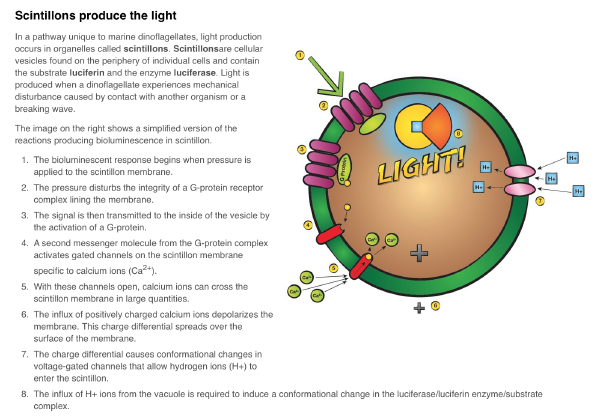GMU:DIY Bio: doing things with biology/Frederic Blais-Belanger/On Bioluminescence
From Medien Wiki
On Bioluminescence
- "The actual mechanism used to produce the bright blue light emanated by marine dinoflagellates is one of the fastest cellular responses known to science. The time from stimulus to the emission of light is less than 20 milliseconds!" (Sarah Bottorff, 2017).
- "The morphology of bioluminescence is just as versatile as its function, ranging from communication to predator-prey interactions and reproduction." (Lydia Kammler, 2013)
- "Luminescent dinoflagellates, [...] are sensitive to distinct toxins and are used as biosensors in such a way that a change in their light emission intensity, which depends on toxin concentrations, can be detected." (Lydia Kammler, 2013)
- "The one thing that almost all bioluminescent reactions have in common is the necessity of a substance referred to as ‘luciferin’." (Lydia Kammler, 2013)
- "The term ‘luciferin’ derives from the Latin word ‘lucifer’, which means ‘light-bringer’. This appropriate description points out that the luciferin molecules are the key substance for the bioluminescence reaction. It is an organic compound that occurs in almost all luminous organisms and provides the energy for the light emitting reaction by being oxidized and promoted to an excited product state." (Lydia Kammler, 2013)

From the article Bioluminescence Explained by Sarah Bottorff on Carolina website
Sources and documentation
- Bottorff, Sarah. Bioluminescence Explained. 2017.
- Kammler, Lydia. Physicochemical Analysis of Bacterial and Firefly Bioluminescence, Bonn-Duisdorf. Bonn: 2013.
